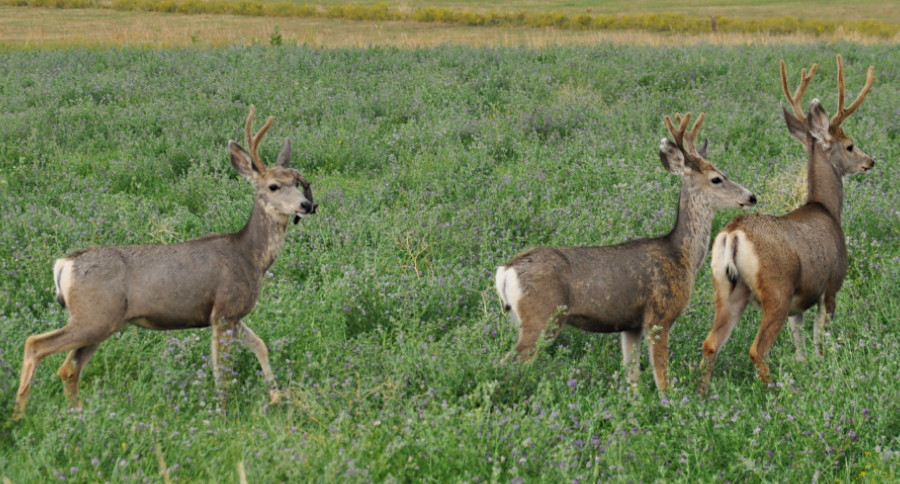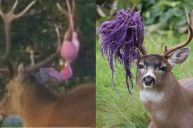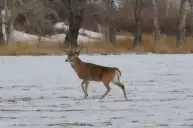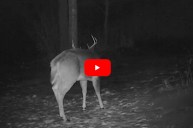Deer DNA could actually hold the secrets to battling cancer.
Hunters and outdoor enthusiasts have long marveled at deer and similar ungulates. These animals shed their antlers every year and grow a new set back in only a few months. But now, scientists are starting to really look closer at that growing process.
They're building whole new genetic profiles for the first time of deer and other ruminants (Animals with multi-stomach systems like cows, antelopes, giraffes, etc.).
What they're finding could help advance medicine in humans.
Here is what this interesting new wildlife research on deer DNA has found.
Why do deer antlers grow so fast?
It really doesn't matter what species of deer we're talking about. Antlers are the fastest-growing tissue on the planet. Mule deer, red deer, elk, moose, caribou and of course, our favorite, the whitetail deer all drop and grow antlers in a way that is unlike any other animal on earth.
According to a Wired.com article, this growing process is what captured Stanford bioengineer Yunzhi Peter Yang's attention when a guide mentioned it during a trip to Alaska about ten years ago.
Specifically, he wondered how members of the deer family could grow antlers so quickly. So, he and his colleagues began collecting and studying the antler tissue samples from California farm deer. He hopes to find cures for debilitating bone disorders such as osteoporosis.
Further study of this genetic material could also be key to helping people rebuild bone structure after a traumatic event (such as a car accident) through fast-growing bone grafts.
It's easy to see why Yang has spent the last 10 years focusing his efforts on this study.
His studies have paid off, as they have identified a few genes specific to the antler growing process.
What else can deer DNA tell us?
Yang isn't the only one intrigued by antler growth and what it could mean for human DNA and medical science.
Last month, a group of Chinese researchers released the results of an extensive genetic analysis of ruminants. Amazingly enough, this study was the first time anyone had ever tried to map out the genomes of ruminant species like deer, cows and goats.
There is a lot to this study, and we can't even begin to explain it all here. But there were many things the scientists wanted to understand that are applicable to us as outdoorsmen and women.
For one, they wanted to know more about the distinct adaptive similarities with species across the globe. Deer, antelope, cattle and goats have extensive home ranges all over the planet. Why are they so successful?
They also hoped to better understand certain traits in animals like mountain goats or desert antelopes that thrive in vastly different climates. The idea there is to use that information for livestock breeders, but it could also tip us off as to where these animals like to be, and why.
Scientists are also looking at ways to use the research to potentially help astronauts cope with the physical challenges of long missions in space. For instance, caribou do well in extreme northern parts of the world where there is a real lack of sunshine, and as a result, a lack of Vitamin D.
That lack of Vitamin D is a real challenge for planning prolonged spaceflights for humans, because the astronauts aren't getting as much Vitamin D naturally from the sun. Research into the caribou's genetic adaptations to a lack of sunlight could lead to breakthroughs in that field for future space adventurers.
But probably the most exciting part of this study, which has developed what they are now calling the Ruminant Genome Database, is what it could mean for cancer research.
Deer as a key to curing cancer?
Normally, fast growth is also associated with things like tumors or cancers. Yet deer, cattle and goats hardly ever suffer from these things. Researchers went all over the world to find out why.
They collected genetic information not just from North American animals, but from species all over the globe. Deer species included roe deer, whitetails, and several subspecies of muntjac deer.
It has all led to an exciting development: the discovery of genes that appear to suppress tumors and cancers.
These genes are common in deer, cattle and goats. So, does that mean the next time you check your trail cameras that you'll be looking at the cure for cancer?
Not necessarily, but it's a lead. The scientific process is slow, and it may take years for the anyone to understand it and apply what they learn to human diseases.
However, it is worth noting that Wired reports that five of the scientists have applied for cancer treatment patents stemming from a gene found in deer that works to suppress tumors when the animals are growing their antlers each summer. That certainly sounds promising.
What's next?
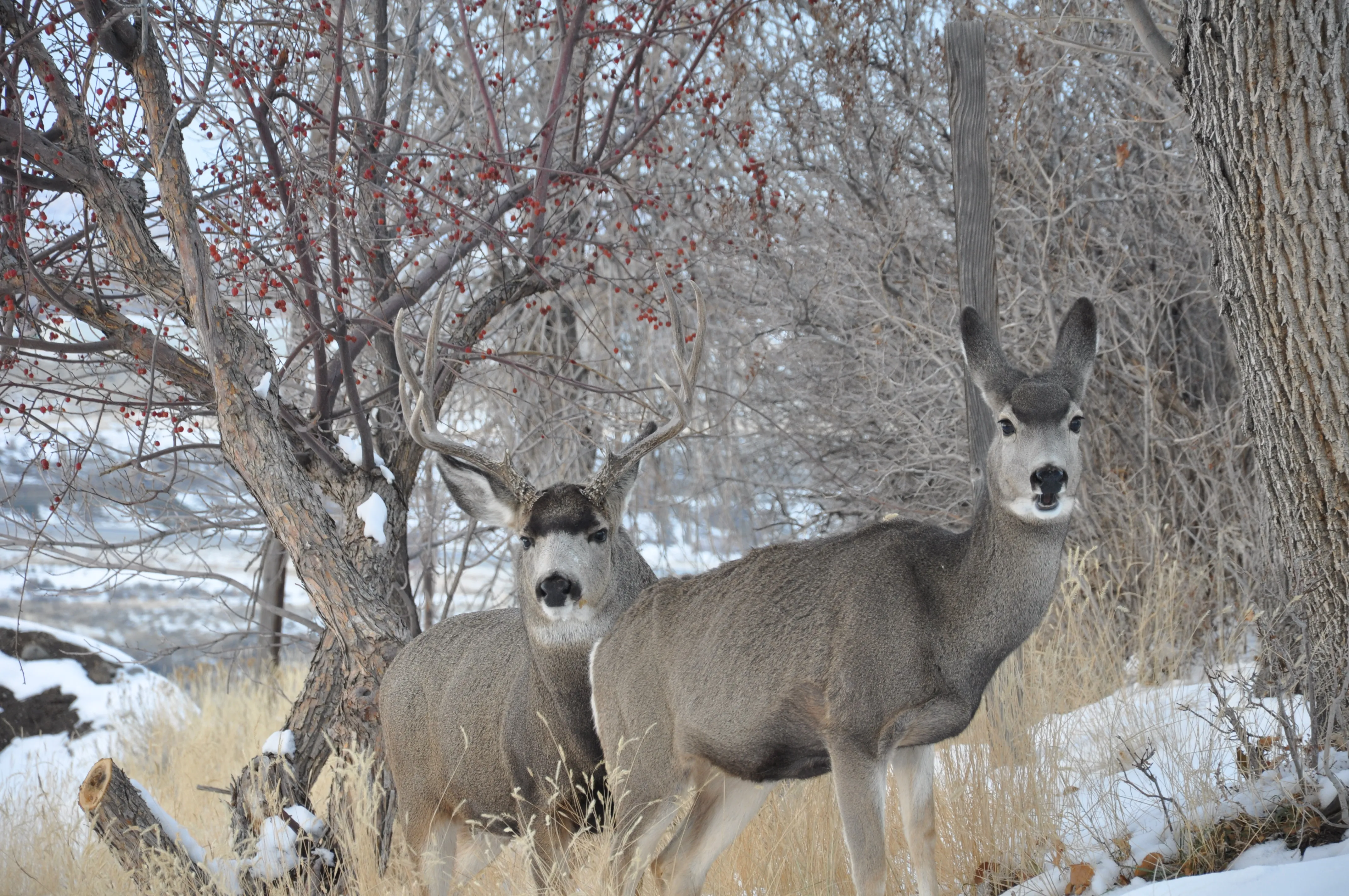
Travis Smola
As far as advancing human medicine goes, it will probably be some time before all the data collected by Yang and other scientists is used in real-world medical applications for humans. We're not experts in genetic research, but we're guessing we'll see the data obtained by the RGD project used by commercial deer, sheep and cattle breeders first.
Meanwhile, some of the scientists are joining forces to really dive into more thorough into DNA analysis of deer populations and their relatives. Yang has already helped that project by reviewing the RGD research and writing accompanying papers to go with it.
"It's not just solving the unsolved problem of how these species evolved and fit together on a family tree, but it also generates a lot of potential for future impact. Remember that a lot of genes that exist in cows and goats and deer and sheep also exist in humans," Yang told Wired.
It certainly is interesting research. Remember that the next time you sit in your treestand.
That's not just venison in front of you. It could be a cure for the medical problems plaguing humanity!
For more outdoor content from Travis Smola, be sure to follow him on Twitter and check out his Geocaching and Outdoors with Travis Youtube channels.
NEXT: AN OUTSIDER'S LOOK AT MICHIGAN DEER HUNTING
WATCH
